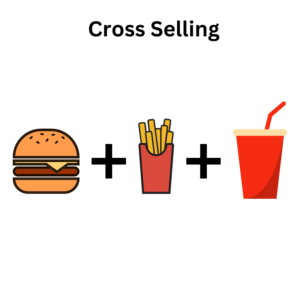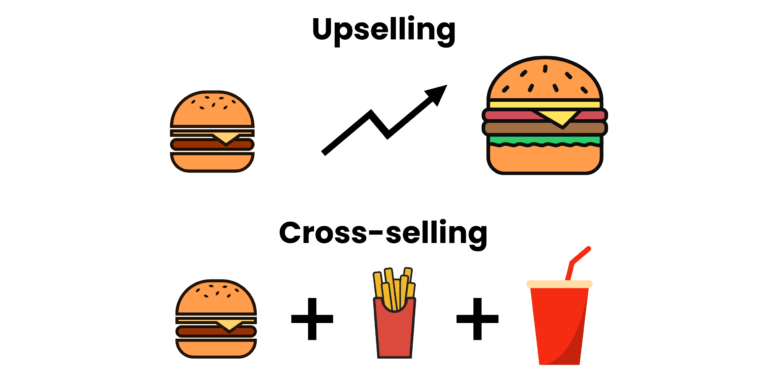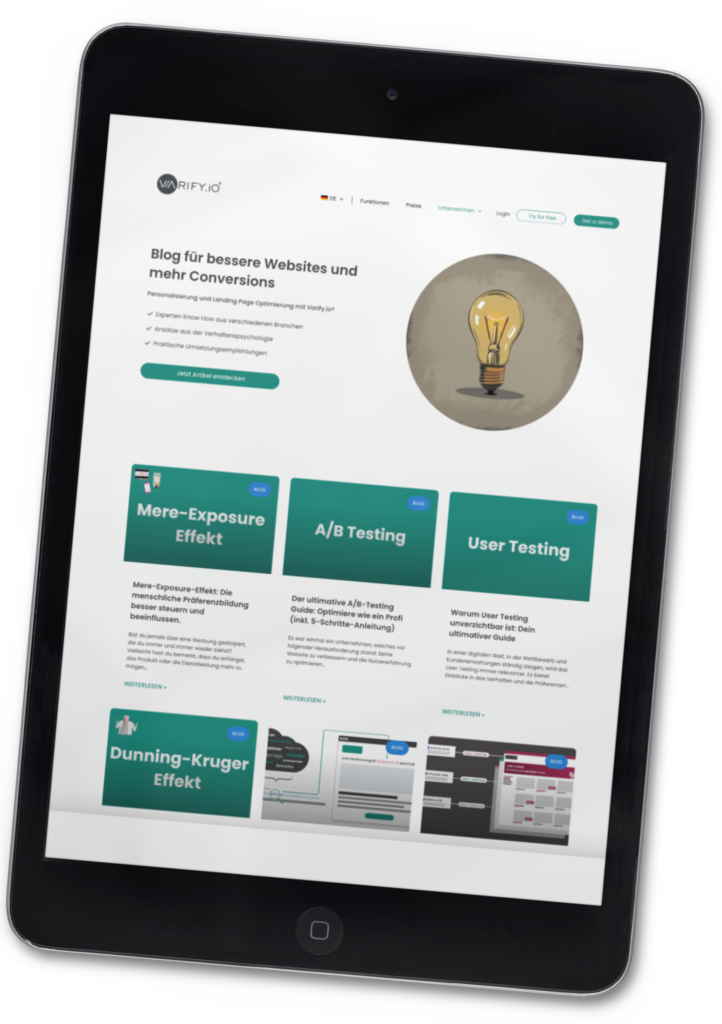A laptop in the shopping cart. Plus mouse, bag and virus protection - recommended at checkout.
Anyone who buys from Amazon experiences cross-selling in its purest form:
Many companies leave this potential untapped. Yet this is precisely what can become a real sales driver if it is strategically thought through.

Table of contents
Why does cross-selling work?
Cross-selling uses a principle that is constantly at work in everyday life: people prefer to buy when decisions are easy. Additional products that logically fit in with the main purchase don't feel like a sale - they feel like a service.
Psychological effects
Three psychological principles make cross-selling so effective:
- Diderot effect
A single purchase often changes the customer's expectations. Anyone who buys a high-quality camera suddenly also wants accessories to go with it - tripod, bag, spare battery. The original purchase creates the desire for a coherent overall picture. - Mere exposure effect
Products that appear repeatedly or in a familiar environment appear more familiar. Repetition creates trust - without the need for an argument. - Paradox of Choice
Too many options can be overwhelming. A targeted recommendation reduces the choice and makes the decision easier. Less is often more - especially if it fits.
The economic advantage is obvious: the shopping basket grows without marketing or sales having to acquire a new customer. Cross-selling works directly at the point of sale - online and offline.
The difference to upselling

Cross-selling and upselling pursue the same goal: to increase sales per customer. But they work in completely different ways.
Cross-selling is about offering customers suitable additional products that complement their original purchase in a meaningful way.
Upselling, on the other hand, aims to win the customer over to a higher-quality or more powerful version of the same product.
The difference lies in the approach:
Cross-selling relies on relevance: The product complements the main article.
Upselling plays with appreciation: The better product replaces the original choice.
Targeted cross-selling strategies
Many cross-selling attempts fail not because of the product, but because of the timing. If you recommend at the wrong time, you come across as arbitrary or pushy. Successful cross-selling therefore starts with a simple question: What does the customer really need now?
Four strategies that work:
- Segmenting instead of scattering
Not every customer is the same. Clustering target groups according to purchasing behavior, product interest or status (e.g. new customer vs. repeat customer) makes suggestions more relevant. A power user expects different add-ons than a newcomer. - Use behavioral data
Clicks, purchases, abandonments: every interaction shows what customers are interested in. Systems recognize patterns - which products are often bought together or which recommendations lead to abandonment. These findings are incorporated into automated suggestions or bundles. - A/B tests as a control tool
Which placement works better? Which wording brings more conversions? A/B tests help to test hypotheses - based on data instead of gut feeling. Those who test regularly continuously optimize performance and user experience. - Personalize instead of generalizing
Standard suggestions often come to nothing. Successful cross-selling adapts to the user, whether based on previous behavior, current interests or situational factors such as time or device. This creates the feeling: This is exactly for me.
KPIs in cross-selling
Without clear measurement, cross-selling remains a nice idea. If you want to know whether additional sales actually work, you need to evaluate precisely. Not only what was sold, but also how, when and to whom.
These key figures are crucial:
- Cross-sell rate
How many purchases contain an additional product? The rate shows how well recommendations convert - in the store, in the newsletter or in personal sales. - Average order value (AOV)
Is the shopping cart growing through cross-selling? If the AOV increases, this is a clear sign of successfully placed additional offers. - Customer Lifetime Value (CLV)
Cross-selling does not end with the first purchase. If you regularly make customers suitable offers, you increase the total value per customer in the long term. The CLV shows how profitable your customer relationships really are.
Conclusion
Cross-selling is not a gimmick at the checkout. When implemented correctly, it becomes a real growth driver. It increases sales per customer, improves the user experience and strengthens customer loyalty in the long term.
The most important things at a glance:
- Recommendations must suit the customer, not be intrusive.
- Timing, context and personal relevance determine success.
- Without clear key figures and regular tests, a lot of potential remains unrealized.
Those who see cross-selling as an integral part of the customer journey create trust. Because good recommendations don't feel like a sale, but like support.
What counts now:
Analyze your current recommendations. Which ones seem arbitrary? Where is a clear system missing? Check which target groups are particularly appealing and which product combinations work. It is crucial that you measure, test and optimize in a targeted manner.
Individual references
- McKinsey & Company (2015): Capturing cross-selling synergies in M&A. McKinsey & Company.
[Accessed on: 25.04.2025]

